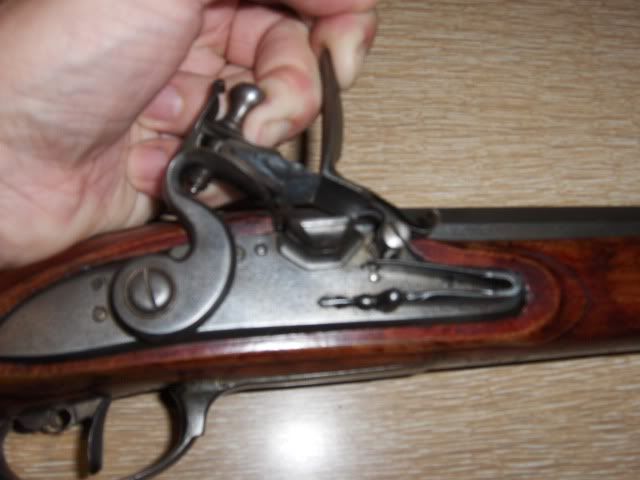I kind of hate to keep repeating myself, but if you put the flint in the cock so that it strikes the frizzen at a 55° to 60° angle, it will be self knapping and you almost never have the problem. A bigger problem is getting residue build up on the underside of the flint when you fire a lot of shots.
At some of the reenactments I attended when I lived in Virginia, I would shoot 80-100 shots or more (all blanks of course) over a weekend. Never had to knap my flint and the flint itself seemed to last almost forever. If I got a misfire due to lack of sparks, I typically just wiped the frizzen and the underside of the flint clean and kept on shooting. I'm using a L&R Queen Anne lock on my Early Lancaster rifle and its an extremely reliable shooter. That angle makes all the difference in the world.
Twisted_1in66 :thumbsup:
Dan

